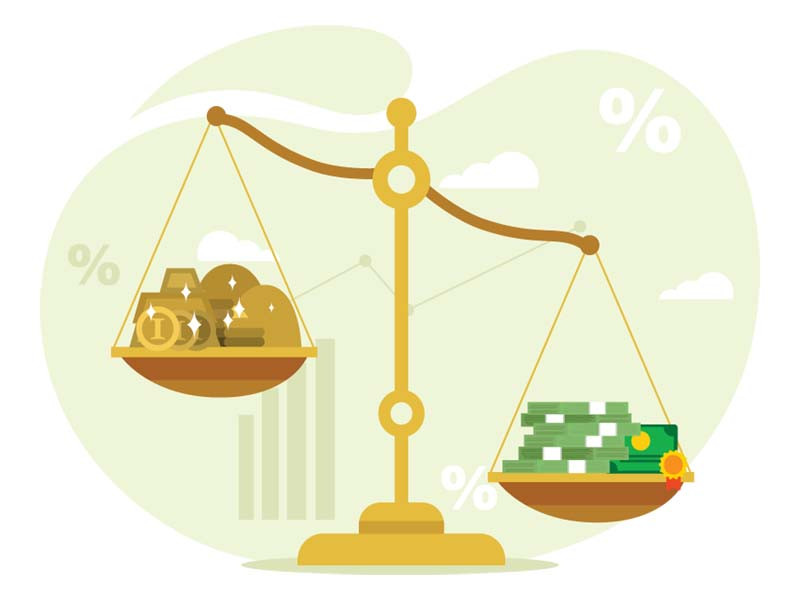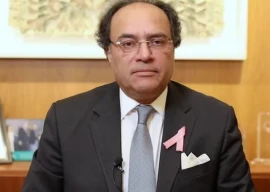
The recent breakthrough in the International Monetary Fund (IMF) deal continued to resonate with global investors for the second consecutive working day, as they showed renewed interest in Pakistan’s rising Eurobonds in international markets on Monday. This indicates that the risk of default has been successfully mitigated.
However, the rupee-dollar exchange rate became a subject of controversy in domestic markets, as currency dealers disagreed with Finance Minister Ishaq Dar’s claim that the local currency had recovered by Rs18-20 (around 7%) against the US dollar. While the open market remained largely closed on Monday due to banks’ annual holiday, a few dealers who resumed operations saw the rupee appreciate by a modest Rs5 to Rs285/$. Some exceptional and unknown deals may have briefly pushed the exchange rate to Rs270/272.
Meanwhile, the price of gold experienced a partial decline, as it dropped by a record Rs8,800 per tola (11.66 grams), or 4%, in a single day to reach Rs207,200 in Pakistan. This calculation was based on the open market exchange rate of Rs285/$.
According to Topline Research, the 10-year Pakistani Eurobond worth $1 billion, maturing in April 2024, continued its upward trend by gaining 2.75%, or $2, to reach 74.3 cents on the dollar on Monday. Global investors view the rising price as an attractive opportunity, indicating that the country’s risk of default on foreign debt obligations has diminished in the short to medium term. On Friday, after Pakistan secured a $3 billion IMF lifeline, the Eurobond price had surged by 15.4% to 72.3 cents. The bond had previously slumped to 38 cents on the-then outlook for likely default on the debt repayment.
Other Eurobonds and Sukuk issued by Pakistan, maturing between 2025 and 2051, also witnessed increases of around 2% on Monday compared to the gains of 6-15% recorded on Friday. These positive trends were seen as a response to the IMF deal.
Experts believe that the IMF agreement has unlocked new loan inflows of approximately $9 billion from other multilateral institutions and friendly countries. These funds were pledged for flood relief in January 2023 but were contingent upon the IMF programme’s approval. It is expected that Pakistan will receive $3 billion to $5 billion out of the total amount within the next 12 months. These inflows will help boost the country’s foreign exchange reserves to around $8.8 billion by June 2024, compared to the current level of $4 billion. The increased reserves will enable the reopening of imports, gradual ramping up of industrial production, and revitalisation of economic activities.
Rupee Controversy
Despite the optimism surrounding the IMF deal, the rupee-dollar controversy persists. Finance Minister Ishaq Dar claimed on Twitter that the rupee stood at 270/272 against the dollar in the open market. However, President of the Exchange Companies Association of Pakistan (ECAP), Malik Bostan stated that the open market remained mostly closed, with only a few dealers operating for a limited time. The currency exchange rate ended the day at Rs285/$, a modest increase of Rs5 (1.75%). Exceptional trades may have briefly touched Rs270/$, but this was not the prevailing rate.
ECAP, General Secretary, Zafar Paracha categorically denied the sharp recovery to Rs270/272 against the dollar. He emphasised that the rupee had only appreciated by Rs5 in the partially operated open market. Paracha and Bostan agreed that the controversy would likely be resolved on Tuesday when both interbank and open markets resume after the Eid holidays.
“The Rs270/272 could be a wish but it is not the reality – not today at least. Markets do not run on wishes,” said Paracha.
Paracha predicted a recovery of Rs5-7 in the interbank market on Tuesday, with the rupee regaining Rs8-10 in the open market compared to the previous Tuesday’s rates. However, he cautioned that the recovery would be temporary, as increased demand for foreign currency due to projected rises in imports could put pressure on the rupee in the coming weeks.
Bostan, on the other hand, projected a stronger rupee, expecting it to reach Rs270-275/$ in the interbank market on Tuesday and potentially even rise to Rs250/$ in the days to come. He cited anticipated inflows of new debt from donor agencies and friendly countries, as well as healthy inflows from workers’ remittances and export earnings, as factors that would support the rupee’s short-term rise.
Gold Dims
Regarding gold, All Pakistan Saraf Gem and Jewellers Association (APSGJA) member Abdullah Abdul Razzaq explained that gold and the rupee tend to operate inversely proportionate to one another. The modest gain in the rupee’s value suggests that bullion may experience a decline of another Rs5,000 to Rs10,000, bringing the price range to Rs190,000-195,000 per tola in the near future.
Published in The Express Tribune, July 4th, 2023.
Like Business on Facebook, follow @TribuneBiz on Twitter to stay informed and join in the conversation.



1729080111-0/BeFunky-collage-(63)1729080111-0-165x106.webp)
1730838202-0/Trump-(1)1730838202-0-165x106.webp)













COMMENTS
Comments are moderated and generally will be posted if they are on-topic and not abusive.
For more information, please see our Comments FAQ